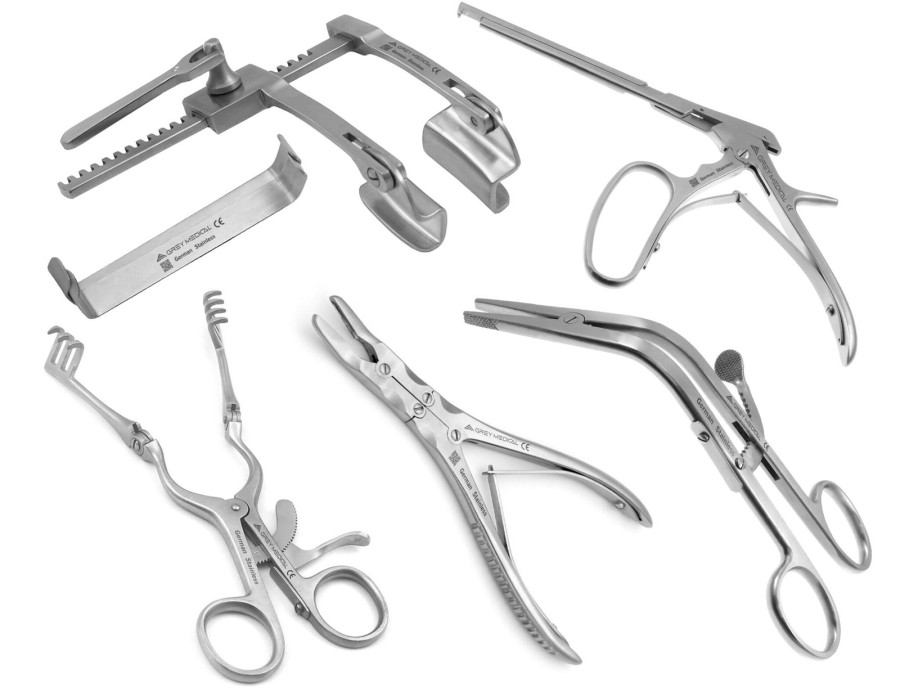The field of spine surgery is continually evolving, driven by advancements in technology and instrumentation that enhance precision, reduce recovery times, and improve patient outcomes. These innovations include the introduction of advanced surgical instruments, navigation systems, and robotics that are reshaping the way spine surgeries are performed. The instruments used in spine surgery are specifically designed to assist surgeons in performing procedures that can range from minimally invasive techniques to extensive reconstructive surgeries.
Spinal Navigation Systems
Spinal navigation systems utilize advanced imaging technologies to assist surgeons in accurately placing screws and implants during surgery. These systems provide real-time feedback, enhancing the precision of the surgical procedure.
- Fluoroscopy: A real-time imaging technique that helps visualize the spine during surgery.
- CT-Based Navigation: Uses preoperative CT scans to create a 3D model of the spine, guiding surgeons in real time.
These systems improve accuracy in screw placement and reduce the risk of complications, such as nerve damage.
Robotic Surgical Systems
Robotic surgical systems have emerged as transformative tools in spine surgery, providing enhanced precision and control. These systems allow surgeons to perform minimally invasive procedures with greater accuracy and less tissue disruption.
- Robotic-Assisted Spine Surgery: Enables surgeons to use robotic arms to place screws and perform delicate maneuvers with increased precision.
- Enhanced Visualization: Robotic systems often incorporate advanced imaging technologies, offering surgeons superior visualization of the surgical field.
Robotic systems reduce the strain on surgeons and improve outcomes by allowing for more consistent and accurate surgical techniques.
Endoscopic Instruments
Endoscopic instruments are crucial for performing minimally invasive spine surgeries, allowing surgeons to access the spine through small incisions.
- Endoscopes: Provide visualization of the surgical site, enabling surgeons to perform procedures without large incisions.
- Endoscopic Graspers and Scissors: Designed for precise tissue manipulation and cutting within tight spaces.
These instruments significantly reduce recovery times and minimize scarring, offering patients less invasive options for spinal procedures.
Interbody Fusion Devices
Interbody fusion devices are specialized implants used to stabilize the spine after decompression or discectomy procedures. They help promote spinal fusion by providing structural support.
- Cage Implants: Hollow devices that are placed between vertebrae to maintain spacing and encourage bone growth.
- Expandable Interbody Devices: Designed to expand once positioned, allowing for better fit and stabilization.
These devices play a critical role in spinal surgeries, enhancing stability and promoting recovery through fusion.
Microsurgical Instruments
Microsurgical instruments are designed for intricate procedures requiring a high level of precision. These tools are often used in spinal decompression and other delicate surgeries.
- Microdiscectomy Instruments: Include small retractors, forceps, and scissors tailored for working in tight spaces.
- Surgical Microscopes: Provide magnification and illumination, allowing surgeons to perform detailed tasks with enhanced visibility.
The use of microsurgical instruments leads to smaller incisions, reduced tissue trauma, and quicker patient recovery.
Conclusion
Advancements in surgical instruments and technologies are revolutionizing the field of spine surgery, allowing for safer, more effective procedures with improved patient outcomes. From robotic systems to endoscopic instruments, these innovations enhance the surgeon's ability to perform complex surgeries with precision and minimal invasiveness. As technology continues to advance, the future of spine surgery promises even greater improvements in technique and patient care. By understanding these advanced tools, healthcare professionals can better appreciate their role in enhancing surgical practices and outcomes in spine surgery.





Comments